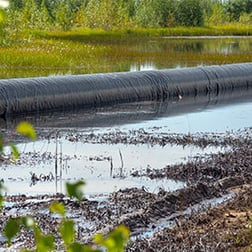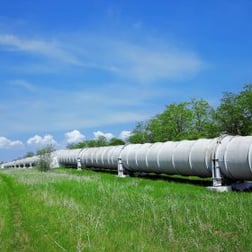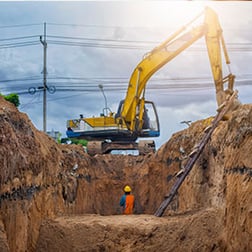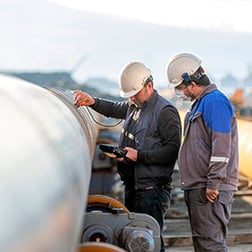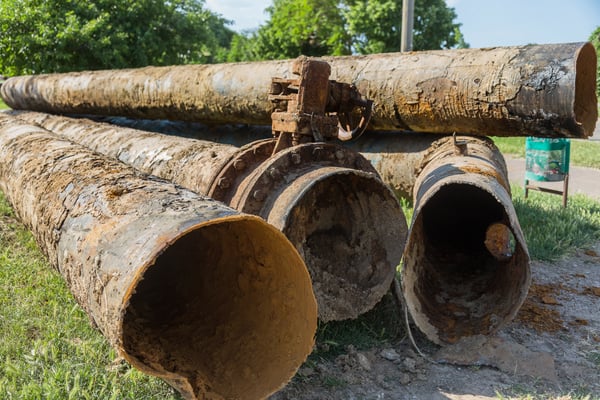One Bridge Solutions
Proven Best Practices for Starting and Simplifying Your Pipeline Integrity Digital Transformation
Modern technology is reshaping every aspect of the pipeline industry, a shift that’s exciting and scary at the same time. Whether you’re ahead of the competition or not, digital transformations, such as cloud computing and machine learning, are set to alter the industry’s standard approach to safety.
For an integrity team, the switch to digital means changing up trusted processes. Despite benefits like getting more value from existing data, streamlining workflows, and ultimately, maintaining a safer pipeline, change is difficult. Even common technology that operators rely on today, such as remote leak detection and SCADA systems, endured initial resistance.
Every organization adapts to changes differently. To ease the process, follow best practices like getting C-suite buy-in, creating a digital road map, and communicating milestones. Put these strategies to work to give your digital transformation the best chance of success.
Get buy-in at all levels
When every employee (from cost controller to CEO) stands behind an initiative, the chances of it taking hold surges. A successful digital transformation requires a top-down approach, making buy-in from the C-suite essential. Having a digital-savvy executive in the spotlight, backing the initiative right from the start, is especially helpful.
Next, appoint a champion as the one point of contact to make it clear that a real person is responsible for project decisions. Inviting business leaders and key integrity staff to join your team helps ensure support from their departments.
Getting buy-in can be challenging because, truthfully, altering how people work triggers fear. It’s important to help integrity staff understand that a digital transformation is not happening to them; it is happening with them. The goal of your initiative is to help them work more efficiently, not make their jobs more difficult.
Communicate frequently
Communicating early, often, and with everyone, helps set any project up for success. One tactic is to establish a “change story” that outlines the goals of the digital transformation to engage employees and explain why the change is happening now and how it’s crucial to the organization. According to a survey by McKinsey & Company, respondents who confirmed using a change story were three times more likely to report their digital transformation as a success.
Pipeline integrity staff need regular updates. Empower your champion to communicate what’s happening, what’s already happened, and what’s going to happen. Frequent, open communication removes the fear of the unknown, which significantly undermines efforts and erodes support for new initiatives.
Don’t focus on the technology
It might seem counterintuitive to take the focus off the technology—after all, the goal is to augment pipeline integrity with technology. But a digital transformation represents much more than that.
Pipeline integrity staff will soon be taking a new approach to their work. They’ll still have the same primary goal—keeping assets safe—but their processes and day-to-day tasks are going to change.
This is the perfect time to examine processes and challenge old ways of thinking. If you’re leading the initiative, talk to integrity engineers and ask them what would make it easier for them to do the high-value engineering work they have been trained to do. Then, you can zero in on the digital features that meet their needs.
Know where you’re going
A map helps you get to a destination without getting lost halfway there. Similarly, when you start a digital transformation, you must have a plan for getting from the beginning to the end.
Stakeholders, from upper management to corrosion engineers, are likely to trust a plan with solid objectives and detailed steps to get there. And with a digital roadmap pointing the way, adjustments won’t throw your project off-course.
Just as important as knowing where you’re going, is knowing where you’re starting from. Determine how much and what kind of training the pipeline integrity team needs and how to accommodate different learning styles. Engineers used to doing their work with slide rules aren’t going to be able to transition to smartphone apps overnight. But with the right plan in place, they’ll get there.
Be realistic
Setting expectations at the beginning is a best practice for any project, and a digital transformation is no exception. Being optimistic is nice, but being realistic is better.
This isn’t just about installing new software—it’s about changing the way the organization does business and challenging attitudes toward technology. It removes a level of comfort that employees are used to. Expect opposition, fear, and push-back.
Digital changes take time to adapt to fully. A well-planned software installation may take a day or two, but expect the entire process to take much longer.
Find out what motivates the integrity team and help them understand the link between the project’s goals, and theirs. When they understand that a digital transformation will make their jobs easier and improve pipeline safety, they’ll support it.
Shifting to success
Managing pipeline integrity is getting more data-intensive, not less. Operators dealing with cumbersome legacy systems are already struggling to maintain pipeline safety, let alone meet the requirements for PHMSA’s mega rule. Adopting advanced technology is becoming a necessity, rather than an option.
The steps you take as you switch to digital could be the difference between a forgettable software roll-out and a cultural shift in how your organization approaches integrity.
Use best practices, including C-suite buy-in, engaging communications, and setting realistic expectations to ensure that when you shift, you’re headed in the right direction.
At OneBridge, we’ve helped pipeline operators leverage cutting edge integrity technology, in addition to supporting their digital transformation from a legacy system to the cloud. Contact us to find out how we can make our CIM platform a part of your digital transformation.




